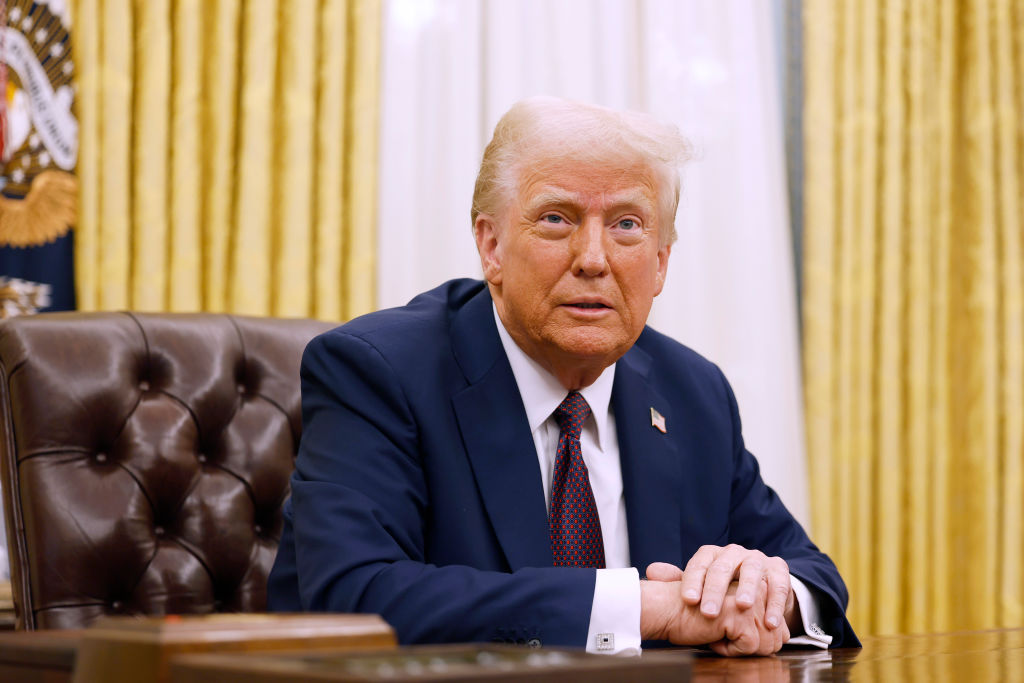Kiplinger Trade Outlook: Trade Gap Widens to a New Peak
Importers are rushing in orders before new or threatened tariffs take effect.

Kiplinger’s Economic Outlooks are written by the staff of our weekly Kiplinger Letter and are unavailable elsewhere. Click here for a free issue of The Kiplinger Letter or to subscribe for the latest trends and forecasts from our highly experienced Kiplinger Letter team.
The U.S. trade deficit in goods and services ballooned in January to its highest level since 1992. It hit a seasonally adjusted $131.4 billion that month, from a downwardly revised $98.1 billion in December — a 34% monthly increase. The trade deficit is a measure of the difference between what the United States buys from foreign nations and what it sells overseas. The data show U.S. companies were getting ahead of new tariffs by fast-tracking orders before the levies took effect. With further tariff announcements due in April, including reciprocal tariffs to retaliate against countries that discriminate against U.S. exports, the jump in the trade deficit is unlikely to reverse much any time soon. The dollar’s strength will continue to support import growth, and along with softening economic activity in advanced economies, will weigh on demand for U.S. goods abroad.
Strength in exports in January was broad-based. Total exports rose 1.2% from the previous month. Over the past year, total exports are up 4.1% (but that pales in comparison with the 23.1% annual increase in imports). Exports of consumer and capital goods rose 8.5% and 8.1%, respectively. Exports of foods, feeds and beverages fell 7.2%. With China’s economy yet to meaningfully stabilize, growth across the eurozone showing signs of fragility, and the Federal Reserve moving slower than some international banks to lower interest rates, export growth is likely to weaken over the next few months.

Sign up for Kiplinger’s Free E-Newsletters
Profit and prosper with the best of expert advice on investing, taxes, retirement, personal finance and more - straight to your e-mail.
Profit and prosper with the best of expert advice - straight to your e-mail.
Imports surged in January as businesses rushed to beat tariffs, up 10% from the previous month. Most of the gain was tied to a 35% increase in imported industrial supplies, which include products spanning crude oil, metals and fertilizers. Within this category, inflows of finished metal shapes accounted for most of the gain. Imports of consumer goods rose 8.3%. Within this category, imports of cell phones increased 12% for the month, which may reflect retailers and wholesalers boosting inventories before additional tariffs on Chinese goods took effect in early February. Imports have outpaced exports on average during the past eight months, keeping the trade deficit on a widening trajectory throughout 2024.
The surge in imports is likely to dent GDP growth in the first quarter. In real terms, goods imports surged by 12.4%, while exports were up by only 0.4% in January. In GDP accounting, imports subtract from overall growth, while exports add to it.
Source: Department of Commerce, Trade Data
Related content
Get Kiplinger Today newsletter — free
Profit and prosper with the best of Kiplinger's advice on investing, taxes, retirement, personal finance and much more. Delivered daily. Enter your email in the box and click Sign Me Up.

Rodrigo Sermeño covers the financial services, housing, small business, and cryptocurrency industries for The Kiplinger Letter. Before joining Kiplinger in 2014, he worked for several think tanks and non-profit organizations in Washington, D.C., including the New America Foundation, the Streit Council, and the Arca Foundation. Rodrigo graduated from George Mason University with a bachelor's degree in international affairs. He also holds a master's in public policy from George Mason University's Schar School of Policy and Government.
-
 How to Get Apple TV Plus for just $2.99
How to Get Apple TV Plus for just $2.99For a limited time, you can get three months of Apple TV Plus for just $2.99 per month. Here’s how to get the deal.
By Rachael Green Published
-
 Stock Market Today: Stocks Surge to Close a Volatile Week
Stock Market Today: Stocks Surge to Close a Volatile WeekIt was another day with a week's worth of both news and price action, but it ended on a strongly positive note.
By David Dittman Published
-
 The New Space Age Takes Off
The New Space Age Takes OffThe Kiplinger Letter From fast broadband to SOS texting, space has never been more embedded in peoples’ lives. The future is even more exciting for rockets, satellites and emerging space tech.
By John Miley Published
-
 Rising AI Demand Stokes Undersea Investments
Rising AI Demand Stokes Undersea InvestmentsThe Kiplinger Letter As demand soars for AI, there’s a need to transport huge amounts of data across oceans. Tech giants have big plans for new submarine cables, including the longest ever.
By John Miley Published
-
 What DOGE is Doing Now
What DOGE is Doing NowThe Kiplinger Letter As Musk's DOGE pursues its ambitious agenda, uncertainty and legal challenges are mounting — causing frustration for Trump.
By Matthew Housiaux Published
-
 A Move Away From Free Trade
A Move Away From Free TradeThe Letter President Trump says long-term gain will be worth short-term pain, but the pain could be significant this year.
By David Payne Published
-
 The Explosion of New AI Tools
The Explosion of New AI ToolsThe Kiplinger Letter Workers and consumers soon won’t be able to escape generative AI. Does that mean societal disruption and productivity gains are right around the corner?
By John Miley Published
-
 Trump’s Whirlwind Month of Crypto Moves
Trump’s Whirlwind Month of Crypto MovesThe Kiplinger Letter The Trump administration wants to strengthen U.S. leadership in the cryptocurrency industry by providing regulatory clarity.
By Rodrigo Sermeño Published
-
 Excitement Over AI Propels IT Spending
Excitement Over AI Propels IT SpendingThe Kiplinger Letter IT sales set to surge in 2025 as businesses rush to adopt generative AI.
By John Miley Published
-
 Donald Trump Tests His Limits
Donald Trump Tests His LimitsThe Kiplinger Letter President Encounters Legal Obstacles in Pursuit of Ambitious Agenda.
By Matthew Housiaux Published